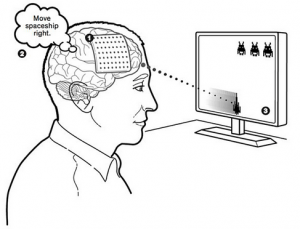 More "mind reading" hyperbole in today's New York Times Magazine: The Cyborg in Us All.
More "mind reading" hyperbole in today's New York Times Magazine: The Cyborg in Us All.
I've talked about EEG-related technology many times in the past. Here are some quotes from the article:
This creates a pulse in his brain that travels through the wires into a computer. Thus, a thought becomes a software command.
We’re close to being able to reconstruct the actual music heard in the brain and play it.
... a “telepathy helmet” that would allow soldiers to beam thoughts to one another.
The NeuralPhone was meant to demonstrate that one day we might mind-control the contact lists on our phones.
The general public has two reactions when the lay press publishes this kind of stuff:
- I always knew this would come true. I.e. perpetuation of scientific fantasies.
- This is really scary stuff. I don't want anybody reading my mind -- or worse, controlling it.
“This is freaky.” And it was.
Huh? ... I think the NYT needs to improve their editorial oversight.

Pingback: EMR News 09/19/2011 - News - emrupdate.com
Articles that deal with science-fiction-is-real topics always get the imagination of the public going. Never mind the fact that advancements like “telepathy helmets” are years away from being used in real life situations, it’s the potential for misuse that makes people nervous. You do make a great point about how some of this work could be used to improve the quality of life, but that’s not the first thing most people are going to think of.
This is the stuff that really interests me. I really like the thought of beign able to play the music heard in your head, I could come out with one-hit wonders if scientists could only tap into my brain (but then again, would I really WANT them to tap into my mind?…. I see definite issues with this kind of technology if not used right)
The music aspect interests me most. Will it make people who are capable of creating beautiful, even genius works of art, less of a commodity or less impressive?
Pingback: Brain Wave Monitoring Through the Extremities | Bob on Medical Device Software